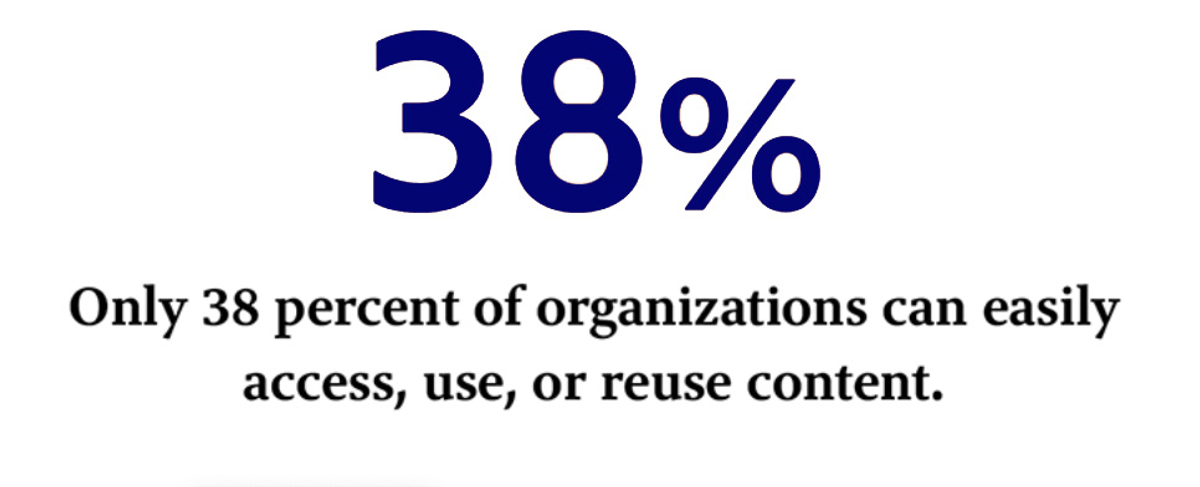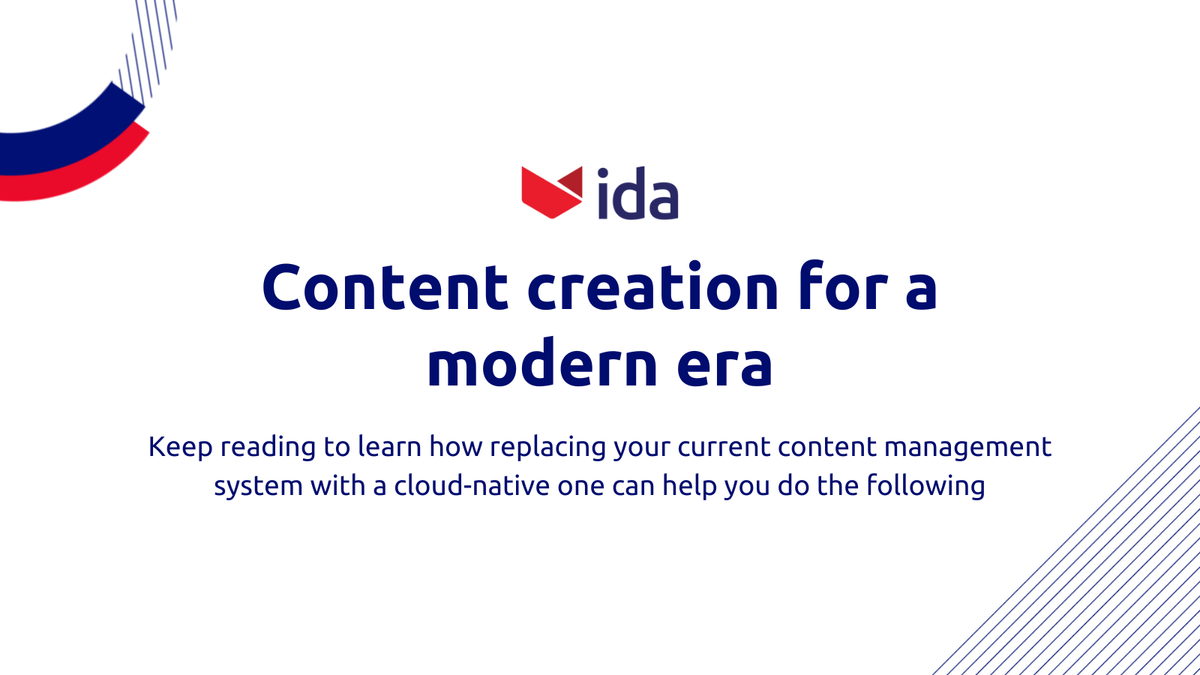Content Creation for a Modern Era
How a Cloud-Native CMS Makes Content Delivery Faster and Easier
Author: Adobe Communications Team
The world of content management is shifting. Real-time, personalized experiences — like receiving offers on your mobile device when you enter a store or seeing content online based on your recent browsing activity — are now commonplace.
In fact, 61 percent of consumers say they expect companies to know and respect them — meaning they want brands to engage with them in ways that are personalized and connected. Similarly, 57 percent say that they expect to be delighted at every turn, according to Adobe research on consumer experience expectations.
Yet many companies still struggle to deliver relevant real-time content experiences. While 64 percent of companies say that they have a content management system ( CMS) in place, only 31 percent say they can publish content to multiple channels without having to handcraft each piece of content separately, according to the Content Marketing Institute (CMI).
In a landscape where companies of all sizes now compete with each other, it is increasingly difficult to protect or grow market share. To remain competitive, businesses must deliver contextualized, real-time experiences quickly. Fortunately, content management technology has evolved to keep up.

By moving to a modern, cloud-native content management foundation powered with artificial intelligence, both IT and marketers will find that it’s easier, faster, and more affordable to deliver the experiences your customers expect.
Keep reading to learn how replacing your current content management system with a cloud-native one can help you do the following:
- Speed your creation and delivery of digital experiences.
- Simplify your production and the DevOps environment.
- Improve your ability to optimize and personalize experiences.****
On-premise, cloud-based, or cloud-native — what’s the difference?
Speed your delivery of special experiences
Getting to market faster than your competitors with new experiences can be a key differentiator. Whether that’s delivering live score updates to your fans or delivering real-time personalized offers to your customers, a modern content management foundation can help you achieve these types of experiences faster.
Currently, you may find there are a few things that slow down your content production. One of the biggest is often testing and security requirements. Even if you’ve moved from an on-premise to a cloud-based CMS, if you haven’t fully automated your deployment processes, then you’ll likely find that the time you saved by no longer managing on-premise servers has been transferred to time-consuming manual deployments.
Adding new features to your content management system manually requires testing and breaking the system before you can go live. Often, because testing is time-consuming and expensive to do, you may choose to forgo new features altogether.
However, with a cloud-native CMS, your DevOps team can meet their objective of uniting all of the software lifecycles, including building, testing, and launching applications to speed delivery and business value. Features are continuously integrated and continuously delivered, automating deployment and allowing DevOps to avoid the grunt work of constant implementation. Additionally, automated testing helps find problems before they become crises — eliminating downtime or content freezes and ensuring greater resiliency.
Another issue is time to production. With as many as 78 percent of organizations saying there is still a lot of manual work required in their content management processes, according to CMI, having the ability to automate tasks can be a differentiator in how fast you get your content experiences to market.
Whether it’s finding the right image or needing to revise content so that you can reuse it across different channels or devices, a modern CMS, powered by AI, can significantly speed these tasks. For example, by using AI, you can automatically summarize text to different lengths, which helps with content reuse across different channels such as mobile, where you don’t want a text-heavy experience.
But the ultimate reward isn’t the time you save, it’s that your customers end up with content experiences in real time that are appropriate for the channel they’re on.

Simplify your content production and DevOps environment
Another key component of your success at delivering real-time personalized experiences to customers comes down to how easy it is for your team to execute. Currently, CMI reports that only 38 percent of organizations can easily access, use, or reuse content.
A modern web content management tool can eliminate this challenge. With user-friendly tools such as an in-context editor, easy-to-use templates, and drag-and-drop components, almost anyone can build, publish, and update pages. This means more content experiences can be created faster and more frequently by more people.
The ability for your teams to access and manage content from any location or device is also valuable in simplifying content management and speeding your ability to deliver digital experiences. “Modern enterprise content management solutions should provide appealing, well-crafted mobile apps for smartphones and tablets so people can get their work done on the go, even when they’re offline and not connected to the company network,” says Melissa Webster, program vice president of content and digital media technologies at IDC.
A cloud-native solution makes delivering this type of “well-crafted” mobile experience possible by allowing users to interact seamlessly from any location, on any device, and at any time with their CMS. And it gives your teams more agility by allowing them to remotely manage digital experiences.
A cloud-native CMS can also reduce complexity in the DevOps environment through its ability to auto-scale. Most CMS solutions, whether on-premise or cloud-based, still require manual efforts to scale. So when traffic spikes unexpectedly, your website may go down as IT teams scramble to add capacity. This can be a huge cost to the business both from the perspective of the number of resources deployed to address the issue and the loss of revenue during any downtime.
In a cloud-native application, especially with the help of microservices, you have greater resiliency as the application can automatically detect traffic increases and scale accordingly. This ensures there is never any risk of downtime or the need for extensive IT resources.
The advantage to your marketing and IT is a simplified environment — where updates and scaling happen through continuous integration and continuous deployment — and the ability to create and deliver digital experiences is always at your fingertips without needing to rely constantly on IT. For your customers, the result is also a better experience since your site is never down, and they can always get your best experience no matter where they are or how much traffic your site is currently generating.
Intelligently select the best content for each customer
According to Gartner, “the number of enterprises implementing artificial intelligence (AI) grew 270 percent in the past four years.” Despite this trend, many content management systems haven’t kept pace. Only 5 percent of organizations in CMI’s study say they have AI technologies in place.
It’s a missed opportunity. A modern content system powered with AI can improve the content management process and better enable the delivery of personalized experiences.
When it comes to optimizing your content management processes, AI can be particularly helpful in determining what content resonates best — and doing so at a statistically relevant level. By being able to quickly parse data to determine what tested experiences are winning, AI allows you to continually tweak your content to ensure it’s resulting in the highest conversion.
AI can also improve your personalization efforts. As you collect data to understand your customers, it can be unwieldy to sift through it all and determine what is valuable for personalization. AI, however, can instantly recognize and match patterns and predict the best next experience you should deliver to your customer.
For example, when a customer watches a video on eco-friendly travel habits and then purchases a two-night stay at an eco-lodge, AI can then provide a tailored recommendation about eco-friendly travel destinations based on the customer’s previous actions. This ensures that each visitor gets personalized suggestions from among hundreds or thousands of content options and provides a much more personalized experience than receiving content based on travel destinations other people viewed.
Ultimately, the benefit of AI is two-fold. By using AI to optimize and personalize your content, you can rid your own team of the time-consuming manual processes of A/B testing, data analysis, and campaign management. This frees up your marketing teams to focus on what they do best – using their human creativity to deliver exceptional experiences for customers.
Modernize your content management with AI
Content management without AI
- Manually analyze data and segments after passive A/B testing.
- Target specific offers to segments using manual rules.
- Manually create rules for recommended products, content, or experiences.
- Manually manage and update rules based on changing campaigns, trends, or seasonality.
Content management with AI
- Actively use AI to continuously analyze and decide the best content to deliver to an audience.
- Use AI to continuously evaluate and select the next best offer or rank-ordered combination of offers.
- Select, customize, and optimize a set of recommendation algorithms.
- Rely on AI’s automated analysis and self-optimization to help dynamically alter what the customer is shown next.
Modernize your content management to meet modern-day expectations
Expectations for digital experiences that prove your business knows its customers and what they want are part of competing in a modern marketplace. But older cloud-based and on-premise content management systems that can rise to these expectations are often cost-prohibitive for all but the largest enterprises.
If you want to meet modern-day customer expectations, it’s time to modernize your content management system.
By making the switch to a cloud-native content management system, even midsize businesses can afford to tap into the power of AI to improve digital experiences and reap the benefits of greater speed, scale, simplicity, and savings that a cloud-native content management system offers. But the ultimate benefit of making the switch is that your business will find it can finally create content experiences your customers love.
Ready to take your next step?
Our sales team is always ready to discuss a challenge you are currently struggling with and see how we can help you come up with a solution. We have an in-depth knowledge and years of experience with the Adobe platforms so get in touch and we'll happily help you build a more scaleable, adaptable and personalised experience for your customers.

